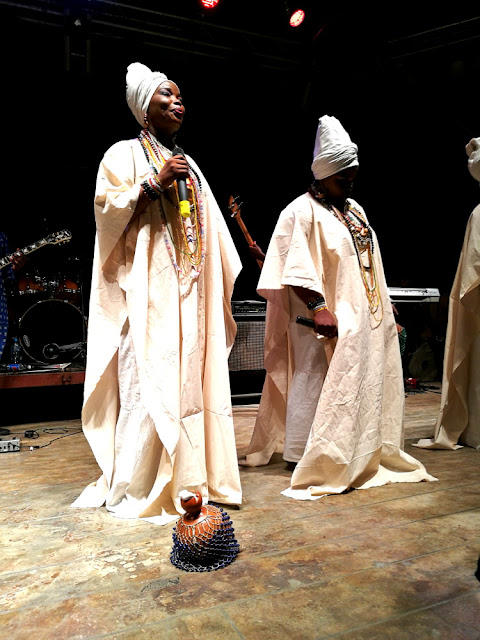 |
| Afropolitan style |
It rained gently the whole evening, not enough to discourage the crowd from gathering at Freedom Park to listen to an eclectic mix of nigerian singers and musicians. That was a blessing after seeing the sky tormented by distant lightnings, it was probably pouring a few kilometers away.
Afropolitan Vibes is a monthly live music concert gathering of nigerian musicians and singers from all musical styles: Afro-beat/ hip hop/ pop and highlife.
 |
| Adunni and Nefretiti |
The party has become very popular over the years, people are still coming en-masse despite the recent steep price increase of the entry tickets. The increase has helped improve the quality of sound as a result of more money being spent on the sound system.
The show started with Bantu, 2 Nigerian - German brothers, who powered the evening. They invited Musiliu Haruna Ishola, famous for singing Apala music which originated in the 1930s as wake-up call during ramadan in yoruba land, a joyful call for breakfast, which evolved over time to become a full-blown music composition where drums and voice have been joined by keyboard, guitar, saxophones and trumpet. Musiliu is the son of a very famous Apala eponymous singer.
 |
| Musiliu Haruna Ishola and his drummers |
Then came Adunni and Nefertiti, two female singing yoruba folk music, dressed in large beige dresses assorted to their head gear.
Jazzman Olofin was the rapper of the evening. Finally, Bez, a short man from Jos wearing a panama-style hat, heavy black-framed glasses and an electric guitar played two songs. That was a bit short indeed!
 |
| Bez with assorted pants and guitar |




Comments
Post a Comment